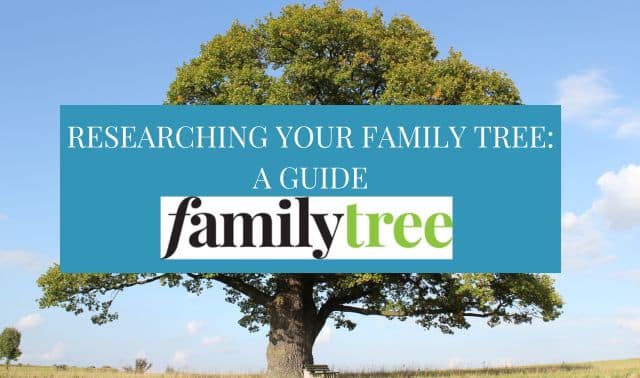
Genealogy isn’t a game of instant gratification. Facts about your family tree may take months or even years to emerge, and you might follow a set of clues a long way before discovering that everything you thought you knew was wrong. It takes patience and persistence — after all, you’ve got hundreds of years of family history to dig into.
But you can make real progress on finding your family tree in an amazingly short period of time, if you know where and how to look. You can even get a good start on your genealogy in just a weekend.
15 Steps to Uncover Your Ancestry in 48 Hours
To prove it, we’ve created a sample weekend genealogy blitz that will get you from a blank slate to a running start on your family tree. You don’t have to follow our timetable exactly, of course, and the particulars of your family history may lead you in slightly different directions. Squeezing so much into little more than 48 hours also means we’ve bent the rules of methodical genealogy research a bit. But this plan or something like it can set you on the path to bringing your past to life — and isn’t that worth giving up a weekend?
Ready? Tell your family you’re going to be a bit busy this weekend. Sharpen your pencils. Fire up the computer. Ladies and gentlemen, start your search engines!
1. Fill out a Family Group Sheet and Five-Generation Ancestor Chart
FRIDAY: 8 p.m.
Dinner’s over and the dishes are washed—time to get ready for Saturday’s genealogy dash. First, download the free family group sheet and five-generation ancestor chart. Print several copies. Starting with yourself and working backward, fill in everything you already know about your family: your parents, your grandparents and so forth. After you’ve penciled in the first few generations, you’ll want to concentrate on either your mother’s or father’s side (there’s always next weekend for the other half); don’t try to trace both at once.
2. Make a list of questions based on family momentos and keepsakes
FRIDAY: 9:30 p.m.
Dive into the closet or climb into the attic and grab those old shoeboxes where you’ve stored family photos, mementos, old letters and paperwork. Then, comb through them for clues. Add your findings to your charts and make a list of questions raised by your shoebox search (who the heck is the woman next to Uncle Fred in that photo?). Now get to bed — you’ve got a big day ahead.
3. Search for family names on FamilySearch.org
SATURDAY: 8 a.m.
Start the day by looking up the names from your charts on FamilySearch.org. Just click Search for Ancestors and enter an ancestor’s name. If you’re looking for a common name, try also entering the person’s father and mother and/or spouse to narrow the search, You can refine your search by date — if you know about when your ancestor was born, for example — and by country and state.
Print copies of your results and enter the findings on your charts, including not only names and dates but places, too. Make sure to footnote where you found this information. You should take results in the site’s Ancestral File and Pedigree Resource File with a grain of salt, since these are unverified family trees submitted by other users like you. Print these pages, too, but use this info only for clues rather than entering it on your charts.
Search on the name of every ancestor from your charts, following the side of your family you’ve picked to trace this weekend. If you discover new ancestors, don’t forget to plug their names into the search, too.
Finally, run all the last names you’ve listed through a Soundex generator. Write down the resulting codes — trust us, you’ll need these later.
4. Search the Family History Library catalog
SATURDAY: 9:30 a.m.
Remember those places you wrote down? Now’s the rime to put them to work — back on FamilySearch. From the home page, click Family History Library Catalog and then Place Search. A few more clicks, and you’ll see what records the Family History Library (FHL) in Salt Lake City — the world’s largest genealogical library — has from your ancestral hometowns. In addition to vital records, you might find city directories, cemetery records, church records, even old newspapers. Keep clicking on anything that looks promising until you get to a page with a View Film Notes button — select that, and print the resulting page.
Don’t know where to find your local FHC? Go back to the main library page and click on Family History Centers. Plug in your location and note the address, phone number and hours of the center nearest you.
You can also download our handy Family History Center Locations directory.
5. Visit your local Family History Center
SATURDAY: 10 a.m.
Grab your charts and printouts — especially those microfilm numbers. It’s time to hit the road to the Family History Center. Hours vary, but most in metropolitan areas maintain some Saturday hours; yours should be open about now.
When you arrive, take the time for an orientation by one of the friendly volunteer staff. Holdings vary from center to center, but if you have ancestors from the area where you now live, odds are good that your FHC will have valuable material in its collection.
6. Search US Census Records
SATURDAY: Noon
Grab fast food on your way back from the FHC — no time to waste, you’ve got ancestors to find! Depending on your local FHC’s resources, in fact, you might be best off spending the afternoon there (no eating at the microfilm readers, please!); otherwise, make tracks for your public library. You’re looking for US census records. Holdings vary widely: You’re most likely to find censuses from your state and its neighbors, though a few libraries’ collections range much farther. Censuses exist for every 10 years from 1790 through 1930, except most of the 1890 tally was lost in a fire — again, though, you’ll have to see what years your local library has.
Starting with the most recent census you can find and working backward in time, search for each family from your charts. Those Soundex codes you wrote down this morning may help you find your surnames in the census indexes — they’re designed to assist with spelling variations, as our ancestors (and census takers in days of yore) weren’t as finicky as we are about spelling.
Take notes on everything you find. If possible, print or copy the census pages for later reference.
7. Host a family dinner
SATURDAY: 5 p.m.
The librarian will kick you out about now, Rest your bleary eyes and have a nice (carryout!) dinner with your family; invite Grandma, Grandpa and any other relatives who live nearby. Just remember to bring your charts, a pen and a notepad to dinner: What better time to pick their brains about the blanks on your family tree so far? (Ideally, you’d tackle this step first, but this weekend you’ve got to work around FHC and library hours.)
After dinner, rake your older relatives on a tour of that shoebox you dug out last night. Maybe Grandma can identify Uncle Fred’s mystery woman.
8. Continue your census searches online
SUNDAY: 8 a.m.
No time for the Sunday papers. Boot up your computer and start exploring the wealth of other genealogy goodies online. But there’s no time, either, for random web surfing — stick to our plan.
First, scour online census resources for any enumerations you couldn’t check yesterday. Start with the links at Census Online site and the volunteer census transcriptions at USGenWeb. If you have kin who should be in the 1880 US census, you can search for free back at FamilySearch (hit the Search tab, click Census on the left-hand side of the screen, then select 1880 United States Census from the pull-down menu).
Still stumped? Consider investing in a subscription to Ancestry or MyHeritage. Both boast digitized images of actual census pages and an ever-growing list of indexes.
9. Explore general genealogy websites
SUNDAY: 10:30 a.m.
If you’ve completed all your census searching — or run into dead ends — now’s a good time to take advantage of some of the best general genealogy sites on the web. These all have simple search engines that let you comb through their zillions of pages in a flash:
10. Look for immigrant ancestors
SUNDAY: Noon
Have you found any immigrant ancestors yet? If last night at dinner Grandpa let slip that the family first came to America between 1892 and 1924, look for your immigrants in the huge online Ellis Island database.
If your family arrived earlier or later, or through a different port, you’re less likely to make a breakthrough this weekend. But you might get lucky at other Web sites — for example, try the Immigrant Ships Transcribers Guild, TheShipsList and Olive Tree Genealogy.
If your public library has Sunday hours, it’s worth a return visit to see what immigration indexes its reference room owns.
11. Explore ethnic, state and regional websites
SUNDAY: 3 p.m.
You’re in the home stretch now — and isn’t it amazing how much you’ve learned about your family history in a single weekend? Time to take what you know to the specialized ethnic, state and regional sites listed in Family Tree Magazine‘s 101 Best Websites list:
Whether your ancestors are Irish or African-American, or your roots lead to New England or California, you’ll find online resources targeted to your interests.
12. Search and post queries on message boards and social media
SUNDAY: 7 p.m.
After dinner, it’s time to share your discoveries and connect with distant cousins who can help you make more breakthroughs. For each major surname you’re researching, compose a brief message explaining what you know and what you’re trying to find our next. Then post it on these message boards, both at the appropriate surname forum and under the geographic area where your answers might be lurking:
Ancestry.com Message Boards
Genealogy.com GenForum
13. Browse pedigree databases
SUNDAY: 8:30 p.m.
Remember those user-submitted family trees you found at FamilySearch? While they haven’t been checked by anyone except the submitter and may contain errors (or contradictory “facts”), they can nonetheless provide valuable clues for the next steps in your research. See if you can prove what you find in these pedigree databases. Use them as possible ways out of your dead ends. And FamilySearch is just the beginning — before you go to bed, spend a few minutes seeking matches at these sites:
Ancestry Archive
RootsWeb World Connect
You don’t even have to scribble down all your results; most of these sites let you download a whole family tree file in a format called GEDCOM, which can be read by any genealogy software program. Don’t have a genealogy program yet? That’s a good project for next weekend.
14. Congratulate yourself on a weekend well-spent!
SUNDAY: 11 p.m.
As you brush your teeth, take a minute to congratulate yourself on a weekend well spent. You’ve probably hit dead ends and roadblocks, contradictions and conundrums — don’t worry, that’s normal. But you also certainly know more about your ancestors than you did on Friday evening. And this is just the beginning, now that you’ve caught the genealogy “bug,” You’ve got countless other sources to explore, both online and off: old newspapers, cemeteries, vital records in courthouses, wills and probate files, land records, city directories, church records… Whether it’s next weekend or many weekends down the road, you’ll find the clues that will unlock the mysteries of your family history — and send you off in search of answers to brand-new puzzles.
A version of this article appeared in Family Tree Magazine‘s November 2003 Trace Your Family History.




